
461 Ocean Boulevard is the second solo studio album by English musician Eric Clapton. It was released in late July 1974 by RSO Records, after the record company released the hit single "I Shot the Sheriff" earlier in the month. The album topped various international charts and sold more than two million copies.
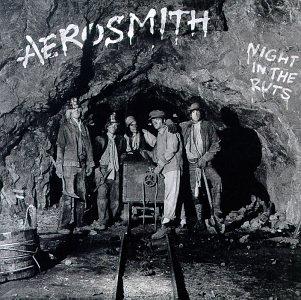
Night in the Ruts is the sixth studio album by American rock band Aerosmith, released on November 16, 1979, by Columbia Records. Guitarist Joe Perry left the band midway through the album's recording.
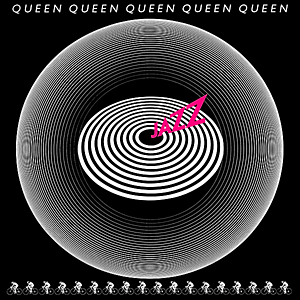
Jazz is the seventh studio album by the British rock band Queen. It was released on 10 November 1978 by EMI Records in the United Kingdom and by Elektra Records in the United States. Produced by Roy Thomas Baker, the album artwork was suggested by Roger Taylor, who previously saw a similar design painted on the Berlin Wall. The album's varying musical styles were alternately praised and criticised. It reached number two in the UK Albums Chart and number six on the US Billboard Top LPs & Tape chart.

Pleasant Dreams is the sixth studio album by the American punk rock band Ramones, released on July 20, 1981, through Sire Records. While the band members wanted Steve Lillywhite to produce, Sire chose Graham Gouldman in an attempt to gain popularity through a well-known producer. The recording process brought about many conflicts between band members, most notably the strife between Joey Ramone and Johnny Ramone, due to Johnny starting a relationship with Joey's girlfriend. There were also disputes about the overall direction of the album, with Johnny leaning towards hard rock and Joey towards pop punk. Ultimately, the album incorporated high production values and varying musical styles, straying from traditional punk rock on songs such as "We Want the Airwaves", "She's a Sensation" and "Come On Now". It is the first Ramones album not to feature any cover songs.

Pat Garrett & Billy the Kid is the twelfth studio album and first soundtrack album by American singer-songwriter Bob Dylan, released on July 13, 1973, by Columbia Records for the Sam Peckinpah film of the same name. Dylan himself appeared in the film as the character "Alias". The soundtrack consists mainly of instrumental music and was inspired by the movie itself. The album includes "Knockin' on Heaven's Door", which became a trans-Atlantic Top 20 hit.

All the Best Cowboys Have Chinese Eyes is the fourth solo studio album by English rock musician Pete Townshend, released on 14 June 1982 by Atco Records. Chris Thomas produced the album and it was recorded by Bill Price at three separate recording studios in London, England, which were Eel Pie, AIR and Wessex. The album peaked at No. 32 on the UK Albums Chart, and at No. 26 on the US Billboard 200.

"There's Got to Be a Way" is a song recorded by American singer-songwriter Mariah Carey for her eponymous debut studio album (1990). Columbia Records released it as the fifth and final single from the album in the United Kingdom and several European countries on May 20, 1991. The song became a minor hit in the UK as well as becoming a minor hit in many European countries. A five-track digital extended play containing remixes of the song was released in July 2020 as part of the 30th-anniversary celebrations of her debut album.
Flash and the Pan were an Australian new wave musical group. Also described as "a kind of post-disco, pre-house percussive dance music". It was formed in 1976 by Harry Vanda and George Young, both former members of the Easybeats, who formed a production and songwriting team known as Vanda & Young. The group's first chart success was their 1976 debut single, "Hey, St. Peter", which reached number five in the Australian Kent Music Report Singles Chart. The next single, "Down Among the Dead Men", peaked at number four in Australia in 1978. For international release, it was re-titled "And the Band Played On".

If You Knew Suzi... is the fifth studio album by Suzi Quatro, released at the end of 1978, but with a 1979 copyright date. By August 2012 this was still Quatro's highest-charting album in the United States. The album also yielded Quatro's biggest US single hit, a duet with Chris Norman named "Stumblin' In" (which reached number 4 on both the Billboard Hot 100 and the Billboard Adult Contemporary charts. It also had an advertising billboard on Sunset Boulevard.
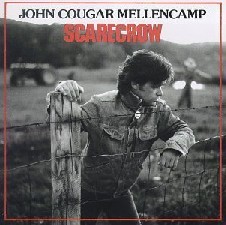
Scarecrow is the eighth studio album by American singer-songwriter John Cougar Mellencamp. Released on July 31, 1985, it peaked at number two on the US Billboard 200. The album contained three top-ten hits: "R.O.C.K. in the U.S.A.", which peaked at No. 2 on the US Billboard Hot 100; "Lonely Ol' Night", which peaked at number six; and "Small Town", which also peaked at number six. "Lonely Ol' Night" also peaked at number one on the Mainstream Rock Tracks chart, his second chart-topping single on this chart.
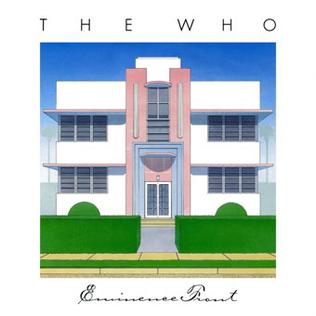
"Eminence Front" is a song by The Who, written and sung by lead guitarist Pete Townshend. It appears as the sixth track on the group's tenth studio album It's Hard (1982). The single entered Billboard Hot 100 on 25 December 1982, reaching number 68.

Daltrey is the debut solo studio album by the English rock singer Roger Daltrey, lead vocalist of the Who. It was released on 20 April 1973 by Track Records in the United Kingdom and MCA Records in the United States. Daltrey was the third member of the group to make a solo album. The bulk of the record was written by David Courtney and Leo Sayer. It took six weeks to record during January and February 1973. Sessions took place at Daltrey's Barn Studio, Burwash, East Sussex, where the backing tracks were laid down; vocals, overdubs, and mixing was completed at the Beatles' Apple Studios at 3 Savile Row, and at Nova Sound Studios.
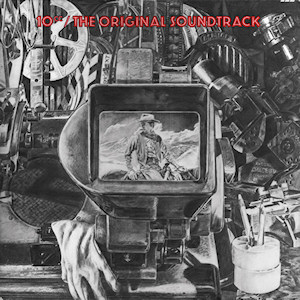
The Original Soundtrack is the third studio album by the English rock band 10cc. It was released in 1975 and peaked at number three on the UK Albums Chart. The Original Soundtrack includes the singles "Life Is a Minestrone", and "I'm Not in Love", the band's most popular song.

Living With War is the 29th studio album by Canadian / American musician Neil Young, released on May 2, 2006. The album's lyrics, titles, and conceptual style are highly critical of the policies of the George W. Bush administration; the CTV website described it as "a musical critique of U.S. President George W. Bush and his conduct of the war in Iraq". The record was written and recorded over nine days in March and April 2006.
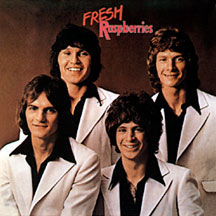
Fresh is the second studio album by Raspberries, released in 1972. It contains the two top 40 singles "I Wanna Be with You" which reached number 16 on the Billboard Hot 100, number 10 on Cash Box and number 7 on Record World, and "Let's Pretend" which reached number 35 on Billboard, number 18 on Cashbox, and number 14 on Record World. It was their highest-charting album, peaking at number 36 on the Billboard 200 album chart.

Thighs and Whispers is the fifth studio album by American singer Bette Midler. Released in 1979, the album reached No. 65 on the Billboard Pop Albums chart.

"Hail, Hail" is a song by the American rock band Pearl Jam. Featuring lyrics written by vocalist Eddie Vedder and music co-written by guitarist Stone Gossard, bassist Jeff Ament, and guitarist Mike McCready. "Hail, Hail" was released in October 1996 as the second single from the band's fourth studio album, No Code (1996). The song managed to reach the number nine spot on both the Mainstream Rock and Modern Rock Billboard charts. The song was included on Pearl Jam's 2004 greatest hits album, rearviewmirror .

Vanda & Young were an Australian songwriting and producing duo composed of Harry Vanda and George Young. They performed as members of 1960s Australian rock group the Easybeats where Vanda was their lead guitarist and backing singer and Young was their rhythm guitarist and backing singer. Vanda & Young co-wrote all of the Easybeats' later songs including their international hit "Friday on My Mind" and they produced themselves from 1967. Young was the older brother of Malcolm and Angus Young of the hard rock band AC/DC and younger brother of Alexander Young of the English band Grapefruit.

A Taste of Honey is the debut album by the American rhythm and blues group A Taste of Honey. It was produced by Fonce Mizell and Larry Mizell for Sky High Productions and included the number one pop, soul and disco classic "Boogie Oogie Oogie".

Shades in Bed is the debut album by the British power pop band the Records, released in 1979 by Virgin Records. The album features their best-known song "Starry Eyes."



















